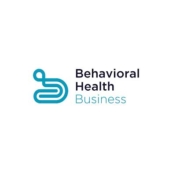By Chris Larson
July 5, 2023
Psychiatric hospitals are buckling under decades of financial pressure that increased following the onset of the pandemic.
Discriminatory regulations, challenging payer relations and inflation have placed several psychiatric hospitals in untenable positions. A spate of facility closures in 2023 demonstrates that the pressure is proving too much. Industry insiders say that systemic changes can’t come soon enough to protect these facilities and position them to meet ballooning patient demand.
“It’s been a host of issues that over time have really made providing this level of care one of the most challenging things I think I’ve done in my career,” said Stuart Archer, CEO of Oceans Healthcare.
Plano, Texas-based Oceans Healthcare is a behavioral care system that specializes in caring for seniors. It operates outpatient, day treatment and inpatient services at 48 locations in Louisiana, Mississippi, Oklahoma and Texas, according to its website.
Collectively, the psychiatric hospital segment is working well beyond its capacity. On average, U.S. mental health facilities have utilization rates of 144%, while combined substance use/mental health facilities have a 137% rate, according to the latest federal National Substance Use and Mental Health Services Survey (N-SUMHSS).
The same survey finds that substance use facilities collectively have a utilization rate of 96%.
Recently, Nashville, Tennessee-based HCA Healthcare Inc. (NYSE: HCA) shuttered an 18-bed psychiatric unit at Mission Oaks Hospital in Los Gatos, California. HCA Healthcare pointed to workforce challenges as the primary reason for the closure.
“Unfortunately, in the post-pandemic healthcare ecosystem, we can’t find qualified staffing for this unit,” an HCA Healthcare representative told The Mercury News.
HCA Healthcare has not responded to BHB’s request for comment.
That closure reduces the psychiatric bed count in Santa Clara County, California, by 8.5%, the report states.
HCA operates five psychiatric hospitals. As of the end of 2022, it had 44 psychiatric units in other facilities, according to public filings.
In Tukwila, Washington, Cascade Behavioral Health Hospital LLC told local officials it would shutter at the end of July, eliminating 288 jobs and 137
psychiatric beds.
“We were a solution to a community that needed access to acute behavioral healthcare,” Shaun Fenton, Cascade Behavioral Health Hospital CEO, told officials in a WARN notice. “Through COVID and other complexities, Cascade remained steadfast in our commitment to our patients and community. However, the breadth of challenges created a situation where the long-term viability of the hospital was no longer sustainable.”
Cascade Behavioral Health Hospital was owned and operated by Franklin, Tennessee-based behavioral health giant Acadia Healthcare Co. Inc. (Nasdaq: ACHC).
The relative impact of one factor or another depends on the community surrounding that hospital.
The burden of history and regulations
Psychiatric hospitals today are not what they used to be. Before the deinstitutionalization movement of the Kennedy era and beyond, there was relatively easy access to facilities that took a long-term, residential approach to treatment for severe mental illness (SMIs) or other acute behavioral health needs.
Cultural pressures to end the warehousing of people with disabilities and advancements in medical treatments inspired regulatory changes meant to bring treatment to outpatient clinics and other community settings. However, regulations didn’t go nearly far enough to replicate the access of the historic approach.
“The two challenges are that we swung really far in the way of avoiding longer-termed care facilities — which really do help people, but people don’t want to get to the point of needing them — and we don’t have enough of an infrastructure to support people not getting to that point,” Lindsay Oberleitner, a clinical psychologist and education director of SimplePractice, told BHB.
SimplePractice, part of EngageSmart, is a health and wellness platform for patients and providers.
Further, the financial pressures from uneven reimbursement and a lack of enforcement of federal reimbursement parity laws has made it difficult for providers to keep up with the high demands. Low payment reimbursements often lead to lower wages for staffers. And as the pressure increases for more services, so does the pressure to keep and retain staff. This is often an impossible effort as workers seek comparable or better wages in much less demanding work environments.
If a facility doesn’t have the staff to keep all of a psychiatric facility’s beds open, it’s not going to generate the income needed to go on, Oberleitner said.
“Through COVID and other complexities, Cascade remained steadfast in our commitment to our patients and community. However, the breadth of challenges created a situation where the long-term viability of the hospital was no longer sustainable.”
Shaun Fenton, CEO of Cascade Behavioral Health Hospital
Even if a health system is able to fully staff its psychiatric facility, behavioral health services are at higher risk of being cut at struggling hospitals compared to physical health services.
Behavioral health, on average, ranks 5.2 among the top 11 issues hospital executives face, according to survey data from the American College of Healthcare Executives. However, workforce issues were the No. 1 issue in the latest version of the survey.
For example, St. Dominic Hospital announced the closure of Jackson, Mississippi-based St. Dominic Behavioral Health Services. The move came “after a thorough assessment of our staffing and services and following losses of several million dollars in the last 3-5 years,” according to a statement from the system. St. Dominic Hospital is part of the Catholic health care system, Franciscan Missionaries of Our Lady Health System (FMOLHS).
The move impacts 157 employees, or 5.5% of St. Dominic’s workforce. The losses St. Dominic incurred didn’t necessarily come from the psychiatric unit. Rather, cumulative losses led to the closure, Meredith Bailess, senior director of marketing and communications for St. Dominic Hospital, told BHB.
St. Dominic Hospital has been in operation for the past 77 years.
Oberleitner said psychiatric hospitals also face the task of caring for even sicker patients today than in the past. Regulatory and payer trends have compressed the length of time a patient can remain in the hospital. This limits a facility’s ability to provide care and generate revenue. Further, the collective behavioral health system has not invested enough in outpatient or preventative health care efforts to lift the burden on psychiatric hospitals.
“You’re taking full responsibility for [the patient’s wellbeing] at a point of crisis and taking on risk,” Oberleitner said. “But many times reimbursement might not fully cover the costs that a hospital is needing to even maintain those beds.”
Still, there is a movement to address the shortage of psychiatric beds. Several operators point to increased demand and decades of prolonged pressures as
opportunities for expansion and investment.
In some ways, the historical challenges for psychiatric hospitals and their partners open the door to fundamentally changing dynamics through lobbying and other dealmaking.
Making deals for psychiatric hospitals
Since Medicaid and Medicare are leading payers — both in reimbursement and health plan policy — behavioral health organizations and their partners can lobby the public and elected officials for better rates and other policy changes.
While this isn’t easy, it’s often necessary. And the stakes at play with psychiatric hospitals can make reform a compelling case to argue.
“It’s very difficult for an individual hospital to be able to negotiate appropriate reimbursement rates from an insurance company or any payer,” James Cassel, chairman and co-founder of the investment bank Cassel Salpeter & Co., told BHB. “But it’s a significant national problem that requires the government’s and the appropriate agencies’ help to work through those problems. Because when a hospital closes and there’s no available care, the community suffers.”
At the federal level, many legal and regulatory frameworks popped up in the 1960s and exist today in similar forms to their original introductions. Some of the toughest regulations are the exclusion of institutions for mental disease from the Medicaid program (IMD exclusion) and the 190-day limit on psychiatric care for Medicare beneficiaries.
The federal government oversees and administers Medicaid in partnership with state governments, which covers disadvantaged populations. Medicare is the federal health plan for American elders and those with end-stage renal disease (ESRD).
The American Hospital Association (AHA) calls these and other behavioral health-related policies “arbitrary,” “discriminatory,” and “outdated”.
“This is one of the only levels of care where the federal government, in many ways, discriminates,” Archer said.
He also pointed to the meager increase that psychiatric hospitals will get from Medicare as part of the prospective payment rules. The Centers for Medicare & Medicaid Services announced a 1.9% net increase for inpatient psychiatric payments for the federal fiscal year 2024.
Many facilities have faced “10%, 15% cost increases by any measure” in recent years.
He also pushes for behavioral health providers to take a seat at the regulatory table.
[It’s] a significant national problem that requires the government’s and
the appropriate agencies’ help to work through those problems. Because
when a hospital closes and there’s no available care, the community
suffers.
James Cassel, chairman and co-founder of Cassel Salpeter & Co.
In Louisiana, Oceans Healthcare found a legislator to sponsor and had a hand in passing a bill that allows patients to choose where they can go to get psychiatric facility services, barring hospitals and providers from dictating which facility patients go to for care. In Mississippi, Oceans Healthcare similarly advocated for and saw a bill that allowed IMD facilities to fully participate in the Medicaid program become law. Oceans Healthcare has also lobbied officials on issues in Texas.
“These are issues that many times we find elected officials care deeply about; they just haven’t had as much exposure to the issues at hand,” Archer said. “Nothing happens legislatively unless there’s a champion for an issue.”
Oceans Healthcare hopes to bring similar advocacy work done at the federal level by the industry trade group, the National Association for Behavioral Healthcare (NABH), to the state level. Archer holds an at-large seat on the organization’s board.
Short of changing regulations, health systems can do what they’ve done at other times to make psychiatric hospitals or units work, Cassel said. This can include merging with other systems or establishing partnerships with larger psychiatric facility operators, he added.
Oceans Healthcare’s growth includes establishing joint ventures with other health systems.
In November, Lafayette, Louisiana-based Ochsner Lafayette General and Oceans Healthcare announced a joint venture to build a $30 million behavioral health hospital. It is slated to open in late 2024, will be called Ochsner Behavioral Health Acadiana and will house 120 beds for adolescents, adults and geriatric patients.
“Many of these health systems have been in communities for generations. They’re the trusted brand in the area,” Archer said. “So we enter into the joint ventures with a tremendous amount of respect. Core to that partnership is a shared vision of the role that behavioral health plays in a community and a shared vision to improve it.”
Companies featured in this article:
Cascade Behavioral Health Hospital, Cassel Salpeter & Co., Franciscan Missionaries of Our Lady Health System, HCA Healthcare, Mission Oaks Hospital, Oceans Healthcare, SimplePractice, St. Dominic Hospital is part of the Catholic healthcare system
Chris Larson
Chris Larson is a reporter for Behavioral Health Business. He holds a bachelor’s degree in communications from Brigham Young University and has been covering the healthcare sector since December 2016. He is based in the Louisville metro area. When not at work, he enjoys spending time with his wife and two kids, cooking/baking, and reading sci-fi and fantasy novels.
Click here to read the PDF.
Click here to read the full article.









